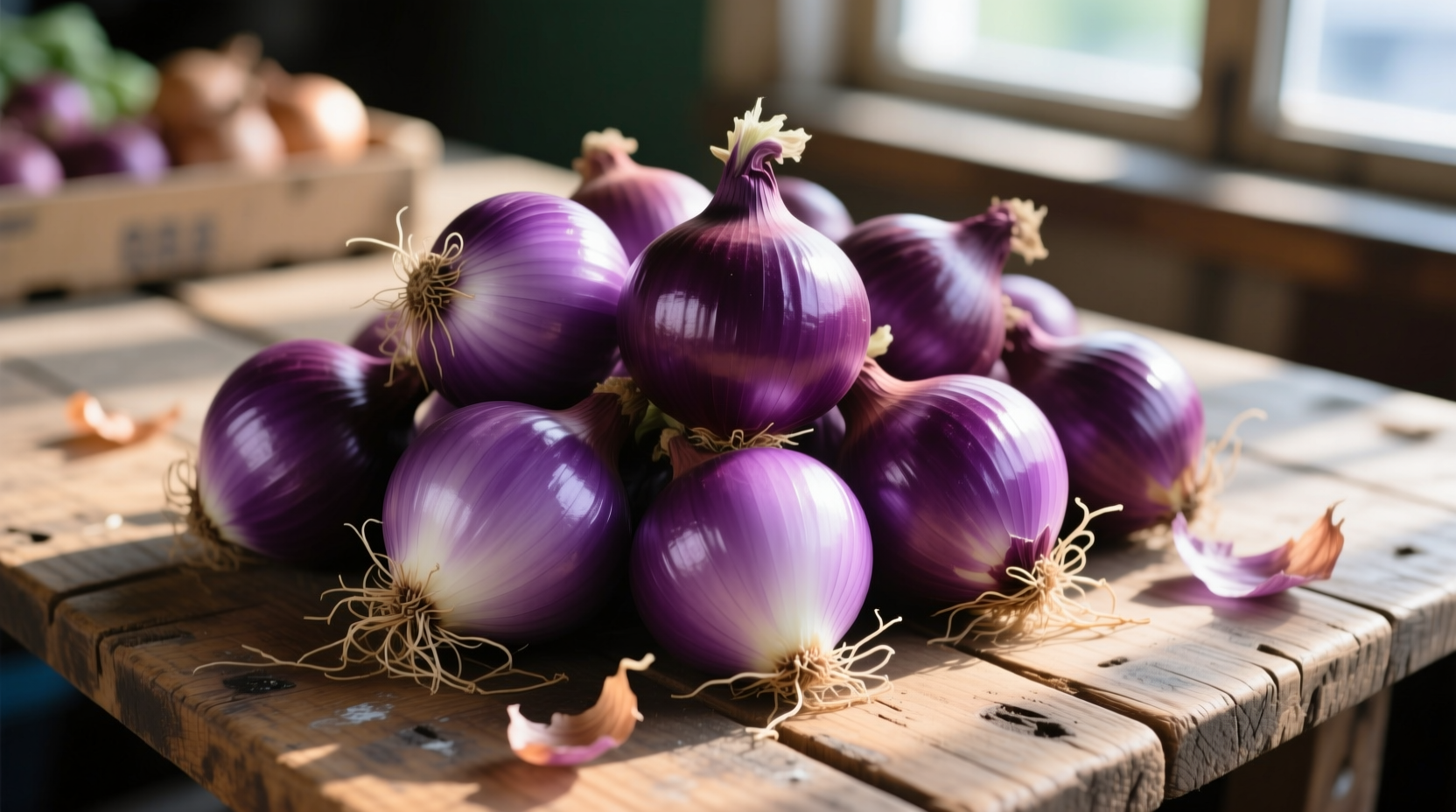If you've searched for "purple onion in Cabot" wondering where to find these vibrant vegetables in Vermont's dairy country, you're not alone. Many home cooks and local food enthusiasts seek out this colorful ingredient for its distinctive flavor and visual appeal. This guide clarifies the confusion around this search term while providing practical information about where to find, how to select, and best ways to use purple onions in the Cabot, Vermont region.
Understanding the "Purple Onion in Cabot" Confusion
When searching for "purple onion in Cabot," most people encounter confusion because Cabot is famous for cheese, not onions. Cabot Creamery, established in 1919, has made this small Vermont town synonymous with dairy products. There is no specific "Cabot purple onion" variety—purple onions (more accurately called red onions in culinary contexts) are a standard variety grown throughout Vermont.
The confusion likely stems from:
- Misunderstanding Cabot's agricultural focus (dairy vs. produce)
- Searchers looking for locally grown purple onions in Cabot, VT
- Potential confusion with "Cabot" as a brand name rather than a location
What Are Purple Onions? Essential Characteristics
Purple onions, scientifically classified as Allium cepa var. aggregatum, feature deep reddish-purple skin and layers with a milder, sweeter flavor profile compared to yellow onions. Their distinctive color comes from anthocyanins, powerful antioxidants also found in blueberries and red cabbage.
| Onion Variety | Flavor Profile | Best Culinary Uses | Storage Duration |
|---|---|---|---|
| Purple/Red Onions | Mild, slightly sweet with tangy finish | Raw applications, salads, salsas, pickling | 2-3 weeks at room temperature |
| Yellow Onions | Strong, pungent when raw; sweet when cooked | Cooking, caramelizing, soups, stews | 2-3 months in cool, dark place |
| White Onions | Sharp, crisp flavor | Mexican cuisine, grilling, fresh salsas | 2-3 weeks at room temperature |
This comparison shows why purple onions stand out for raw applications where their color and milder flavor shine. According to USDA nutritional data, purple onions contain 20% more antioxidants than yellow varieties, making them both visually striking and nutritionally beneficial.
Finding Purple Onions in Cabot, Vermont
While Cabot itself (population 1,400) doesn't have large-scale onion production, the surrounding Washington County region offers several reliable sources for fresh purple onions:
Local Farmers Markets (Seasonal: June-October)
- Cabot Farmers Market (Saturdays 9am-1pm, June-October): Features several local growers from the Northeast Kingdom region
- Hardwick Farmers Market (15 minutes from Cabot): Known for high-quality produce from Cedar Nut Farm and other regional growers
- Montpelier Farmers Market (25 minutes from Cabot): Largest selection with multiple onion varieties from Vermont Vegetable Cooperative
Year-Round Grocery Options
- Cabot Village Market: Carries locally sourced produce when in season
- Shaw's Supermarket (Barre, 20 minutes away): Regularly stocks purple onions year-round
- Health Source Natural Foods (Montpelier): Specializes in organic local produce
Selecting and Storing Purple Onions for Maximum Freshness
When shopping for purple onions in the Cabot area, look for these quality indicators:
- Firm bulbs with no soft spots or blemishes
- Smooth, dry outer skin without sprouting
- Heavier weight for their size (indicates higher moisture content)
- Vibrant purple color without brown patches
Proper storage extends freshness:
- Store in a cool, dark, well-ventilated area (not the refrigerator)
- Keep away from potatoes which emit gases that accelerate spoilage
- Use within 2-3 weeks for best flavor and texture
- For longer storage, cut onions can be kept in airtight containers in the refrigerator for 7-10 days

Culinary Applications: Making the Most of Purple Onions
Purple onions' unique flavor profile makes them versatile in Vermont kitchens. Unlike yellow onions that benefit from cooking, purple onions shine when used raw or lightly cooked:
Best Cooking Methods
- Raw applications: Thinly slice for salads, sandwiches, and burgers—their color adds visual appeal
- Pickling: Soak in vinegar solution for vibrant pink pickled onions that enhance charcuterie boards
- Quick sautéing: Cook briefly to retain color while mellowing sharpness
- Grilling: Slice thickly and grill for 2-3 minutes per side for smoky-sweet flavor
Vermont-Inspired Recipe Ideas
- Cabot Cheddar and Purple Onion Frittata: Combine with local Cabot cheddar for a Vermont breakfast classic
- Maple-Glazed Purple Onion Rings: Use Vermont maple syrup for a sweet-savory treat
- Apple-Purple Onion Slaw: Pair with local apples and cider vinegar dressing
- Heirloom Tomato and Purple Onion Sandwich: Perfect summer meal with local produce
Seasonal Availability in Vermont
Understanding Vermont's agricultural calendar helps maximize your purple onion experience:
| Season | Availability in Cabot Area | Flavor Characteristics |
|---|---|---|
| June-July | Limited (early season) | Milder, higher water content |
| August-September | Peak season (abundant) | Optimal balance of sweetness and tang |
| October-November | Waning supply | More intense flavor, better for cooking |
| December-May | Imported varieties | Less vibrant color, milder flavor |
According to the University of Vermont Extension's Vermont Harvest Calendar, purple onions reach their peak flavor and nutritional value during late summer harvests when grown in Vermont's climate. Local growers typically plant in May and harvest in late August through September.
Common Questions About Purple Onions in Vermont
Many home cooks in the Cabot area have similar questions about incorporating these colorful vegetables into their cooking:











 浙公网安备
33010002000092号
浙公网安备
33010002000092号 浙B2-20120091-4
浙B2-20120091-4